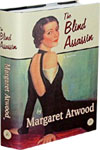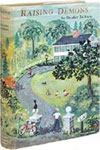TWO PHOTOGRAPHIC POSTCARDS: THE MEIJI EMPEROR MUTSUHITO & EMPRESS HARUKO. THE OT
[MEIJI EMPEROR & EMPRESS].
From
RARE ORIENTAL BOOK CO., ABAA, ILAB, Aptos, CA, U.S.A.
Seller rating 3 out of 5 stars
![]()
AbeBooks Seller since June 19, 1997
About this Item
Description:
Japan n.d. ca. 1880's.Two photographic post cards, photos in black and white, with elaborate border and 1 1/2 Sen revenue stamp affixed to one, the other full portrait of the Empress in her elaborate Western official costume. S C A R C E Two superb photographic postcards. The first shows the Meiji Emperor Mutsuhito and his Empress Haruko at their coronation on an elaborately decorated card. The two are framed in oval gilt frames, with two royal cranes behind them, below are four floats for the celebration, with a Japanese revenue stamp to certify genuine stuck in lower left corner, then it is red sealed with a chop. * The second is a stunning poised photograph of Empress Haruko. She wears her crow, with short cropped hair, seated on an elaborate throne-like Western chair. Her dress is magnificent, with mid-upper arm length gloves, with two bracelet per arm. She holds an ostrich feather fan, wears three strands of short pearl beads, and has a shoulder to waist ribbon. She wears at her throat a chrysanthemum crest and three medals and badges of rank. She looks straight ahead and appears quite regal. This appears to be an actual photograph, rather than a collotype. The Meiji Emperor period began his reign from January 1867, it ended with his death in 1912. The two cards are contained in clear plastic envelope protectors. Similar photographs are illustrated in C. Worswick: JAPAN PHOTOGRAPHS 1854-1905 on pp.40 & 41. * Emperor Meiji [aka Meiji-Tenno] (November 3, 1852 -July 30, 1912) was the 122nd emperor of Japan according to the traditional order of succession, reigning from February 3, 1867 until his death. * His personal name was Mutsuhito . Like all his predecessors, he has been known by a posthumous name since his death. Upon his death a new tradition of giving the late emperor the name of the era coinciding with his reign was established. Having ruled during the Meiji era (Enlightened rule), he is now known as Emperor Meiji. Although he is sometimes referred to as Mutsuhito or Emperor Mutsuhito outside of Japan, Japanese emperors are only referred to by their posthumous names in Japan. Use of an emperor's personal name would be considered too familiar, or even derogatory. * At the time of his birth in 1852, Japan was an isolated, pre-industrial, feudal country dominated by the Tokugawa Shogunate and the daimyo, who ruled over the country's more than 250 decentralized domains. By the time of his death in 1912, Japan had undergone a political, social, and industrial revolution at home (See Meiji Restoration) and emerged as one of the great powers on the world stage. * Emperor Meiji was the surviving son of Emperor Komei by the lady-in-waiting Nakayama Yoshiko (1834-1907), the daughter of Lord Nakayama Tadayasu, sometime minister of the left (sadaijin) and a scion of the Fujiwara. He was born eight months before the arrival of Commodore Matthew Calbraith Perry and the United States squadron of "Black Ships" in Edo Bay and two years before the first of the unequal treaties which the Tokugawa Shogunate signed with Perry. Originally titled Sachi no miya (Prince Sachi), the future emperor spent most of his childhood at the Nakayama household in Kyoto, as it was customary to entrust the upbringing of imperial children to prominent court members. * He was formally adopted by Asako Nyogo (later Empress Dowager Eisho), the principal consort of Emperor Komei, on 11 July 1860. He also received the personal name Mutsuhito, the rank of Shinno (imperial prince, and thus a potential successor to the throne) and the title of Kotaishi (Crown Prince) on the same day. Crown Prince Mutsuhito acceded to the throne on 3 February 1867 at the age of fourteen. Later that year, the era was changed to Meiji, or "Enlightened rule," which was later used for his posthumous name. This marked the beginning of the tradition of proclaiming one era for the entire reign of an emperor, and posthumously naming him after the era over which he ruled. * On 2 September. Seller Inventory # 22014101
Bibliographic Details
Title: TWO PHOTOGRAPHIC POSTCARDS: THE MEIJI ...
AbeBooks offers millions of new, used, rare and out-of-print books, as well as cheap textbooks from thousands of booksellers around the world. Shopping on AbeBooks is easy, safe and 100% secure - search for your book, purchase a copy via our secure checkout and the bookseller ships it straight to you.
Search thousands of booksellers selling millions of new & used books
New & Used Books
New and used copies of new releases, best sellers and award winners. Save money with our huge selection.
Rare & Out of Print Books
From scarce first editions to sought-after signatures, find an array of rare, valuable and highly collectible books.




